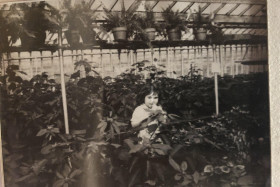History of the Poinsettia

Poinsettia plants are native to Central America. They have a long history dating back to the Aztecs in the 14th through 16th centuries in southern Mexico. History shows the Aztecs used poinsettias for both decorative and practical purposes. They would extract a purplish dye from the plant for coloring textiles and even cosmetics. The white sap was used to treat fevers. Many Mexican legends surround the poinsettia and its relationship to the Christmas story.
Joel Robinson Poinsett, a botanist and statesman who played a role in the founding of the Smithsonian Institute, was appointed as the first U.S. Ambassador to Mexico. Poinsett had a love of flowers and maintained greenhouses at his home in South Carolina. Poinsett was taken by the brilliant red blooms on a visit to Mexico. He sent some of the plants back to his home in South Carolina where he began propagating the plants and sending to his friends and botanical gardens.
The plant got its name around 1836 in honor of the man who first brought it to the United States. Congress later honored Mr. Poinsett by declaring December 12th (the date of his death) as National Poinsettia Day.
Orban’s Nursery started growing poinsettias in 1945, when the family’s patriarch, Bill Orban returned home from serving as a pilot and member of the OSS in World War 2. He moved the family business from Ohio to Bradenton, Florida in 1952.
Orban’s Nursery is now known as one of the top poinsettia producers in the nation, growing more than 200,000 poinsettias in 2019 and having delivered to Disney World, Epcot, and Publix stores throughout the Southeast. The family is as dedicated to producing the highest quality poinsettias as they first did more than 70 years ago.

Photo: One of the earliest known photos of Orban’s poinsettias, circa 1950.
